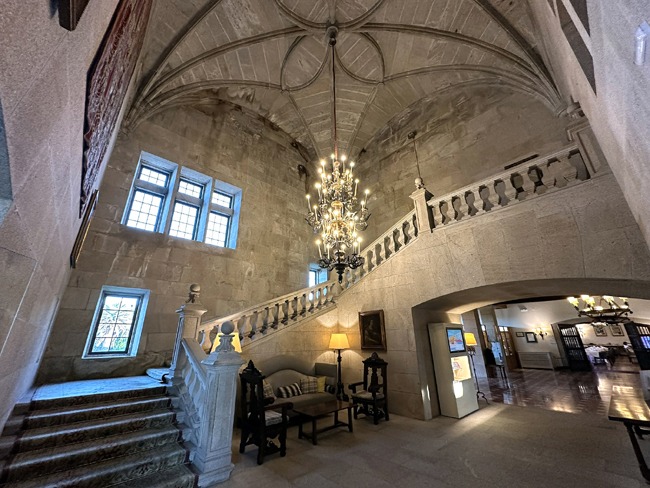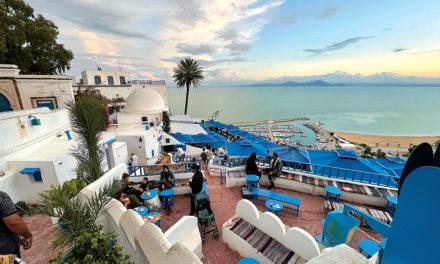- Santo Estevo
- Santo Estevo
- Santo Estevo
- Baiona
- Baiona
- Baiona
- Santiago
- Santiago
- Cambados
- Cambados
Stay & Play
A Journey Through Time: Staying in Spain’s Timeless Paradores
Article and photography by Michael Morcos
Spain’ Paradores are not just hotels—they are portals into the soul of Spanish history, architecture, and tradition. I’ve traveled the world many times over, yet few hospitality experiences have moved me like a journey through these remarkable state-run establishments. Born from a 20th-century initiative to preserve historic buildings and promote tourism in lesser-known regions, the Parador network today boasts over ninety properties—many located in former castles, monasteries, and noble mansions.
It all began in 1928 with the opening of the Parador de Gredos in the Sierra de Gredos mountains. From that point forward, Spain committed to transforming its crumbling relics of the past into luxurious accommodations. The concept was brilliant: preserve Spain’s heritage while offering travelers the rare chance to sleep where monks prayed, kings ruled, and battles were once fought.
On a recent journey through the mystical lands of Galicia and the Rías Baixas, I had the privilege of staying in four unforgettable Paradores—Santo Estevo, Baiona, Santiago de Compostela, and Cambados. Each one left its indelible mark on me.
What struck me most was how each Parador seemed to embody the character of its region—whether through the food, architecture, or local traditions. The staff in every location took pride in sharing not only their property but also their culture, making each visit feel like a personal introduction to a different part of Spain.
Parador de Santo Estevo-Tranquility Among the Monks
Tucked away in the Ribeira Sacra, where the Miño and Sil rivers carve lush canyons into the Galician landscape, lies the Parador de Santo Estevo, a former Benedictine monastery dating back to the 6th century. Reaching this haven felt like a pilgrimage in itself—winding roads through forested valleys eventually opened up to reveal the massive granite façade of the monastery.
The moment I stepped into the cloistered halls, I felt the weight of centuries settle gently around me. Ancient stone arches, layered with Romanesque, Gothic, and Baroque influences, created an atmosphere of quiet reverence. My room looked out over dense forest and distant mountain peaks, where each morning the sun rose in a spectacular display of color—an unforgettable way to begin the day. It was hard to believe that just hours earlier I had been navigating the chaos of modern travel.
Dinners at the restaurant were meditative affairs—regional specialties like Galician octopus, empanadas, and slow-cooked veal, all paired with local Ribeira Sacra wines. The monks may be long gone, but their sense of calm endures in every stone and shadow.
Parador de Baiona-Watching the Sea from Fortress Walls
From the serenity of the mountains, I drove west to the Atlantic coast, where the Parador de Baiona stands proudly atop a seaside promontory, enclosed within the walls of a medieval fortress. If Santo Estevo whispered of monastic contemplation, Baiona thundered with maritime glory.
Baiona was the first European port to receive word of Columbus’ discovery of the New World. The replica of the Pinta, docked in the harbor below, is a constant reminder of that legacy. The parador itself is housed in the Condes de Gondomar Castle, and walking along its fortified walls at sunset, with waves crashing below, was a cinematic experience.
My room had wide windows that opened to sweeping views of the Cíes Islands and the endless blue of the Atlantic. Inside, the decor was regal—heavy wooden furniture, tapestries, and iron chandeliers—but somehow still inviting. The thick stone walls seemed to hum with history, and walking through the fortress corridors, I imagined centuries of sailors, nobles, and sentinels who had once stood in the same spot, watching the tides roll in. That simple connection to the past set the tone for a stay that felt like both a coastal escape and a step into a chivalric past.
Baiona’s old town is charming and easily walkable, but I found it difficult to leave the parador’s walls. It’s not every day you sleep in a castle perched above the sea.
Parador de Santiago de Compostela-A Pilgrim’s Reward
Arriving in Santiago de Compostela, I found myself face to face with the final destination of one of the world’s great pilgrimage routes—the Camino de Santiago. Facing the awe-inspiring cathedral in the heart of the old city stands one of the oldest continuously operating hotels in the world: the Parador de Santiago, also known as the Hostal dos Reis Católicos.
Built in 1499 by the Catholic Monarchs as a hospital and hostel for weary pilgrims, this parador is a masterpiece of Plateresque architecture, with soaring vaulted ceilings, cloisters lined with intricate carvings, and rooms steeped in royal and religious history.
I arrived on a rainy afternoon and watched dozens of pilgrims enter the square, their faces a mix of fatigue and spiritual triumph. Sitting in the parador’s elegant dining room, I enjoyed a pilgrim-inspired tasting menu that blended the rustic flavors of the camino with the finesse of fine dining. Each dish—seafood stew, roast lamb, and tarta de Santiago—told a story of the land and its people.
As a traveler, it’s rare to stay somewhere that is both a luxurious retreat and a living monument. Here, history breathes from every stone.
Parador de Cambados-Wine Country Elegance
My final stop brought me to Cambados, the heart of the Rías Baixas wine region, and a town that exudes noble charm and vinicultural pride. The Parador de Cambados, located in the 17th-century Pazo de Bazán, is more modest in grandeur compared to the others, but it offered perhaps the most personal warmth.
With its flower-filled courtyard, inviting lounges, and relaxed coastal atmosphere, the parador felt like a stately country house. My room had rustic wooden beams and views of vineyards stretching to the horizon. Cambados is famed for its albariño. That evening, I watched the sky blush pink over the estuary and felt an overwhelming sense of gratitude. This was the kind of travel experience I chase—one that is grounded, authentic, and undeniably special.
More Than Hotels: Living the Soul of Spain
Each of these Paradores offered far more than a place to sleep—they provided emotional connections to the land, its history, and its people. In a world increasingly obsessed with the new and modern, the Paradores of Spain remind us of the beauty in preservation, patience, and authenticity.
Whether nestled in a cloister, perched on a fortress wall, across from a cathedral, or beside rolling vineyards, these national treasures offer a kind of travel experience that stays with you long after you’ve checked out.
Spain may have invented the concept of siesta, but when you stay in a Parador, you wake up to something truly unforgettable.















